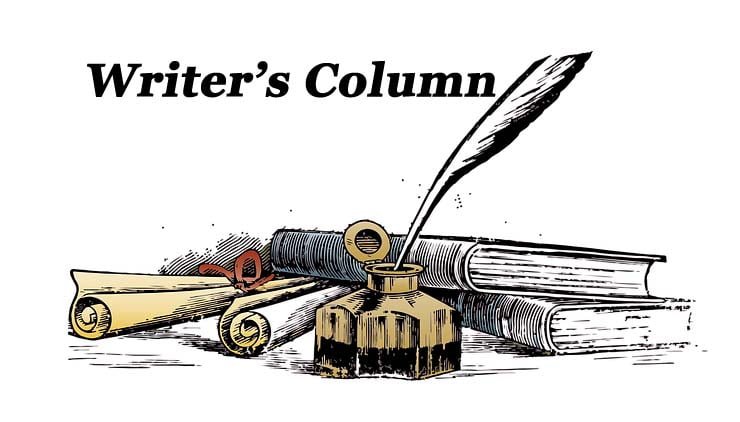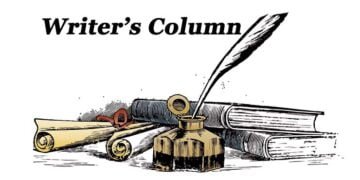Like any old Shillong boy who loves everything that is iconic in Shillong, I must question everything the government does, or intends to do with these iconic places, and like the most questioning citizens I always receive the same response. Here’s how the discussion normally goes…
Govt: “What are your comments on the proposal in the Phan Nonglait Park?”
Me: “Why, what are y’all planning?”
Govt: “To extend the Civil Hospital over a portion of the Park.”
Me: “Beware, don’t do it”
Govt: “Why?”
Me: “Because it is too incredible – a great folly”
My own feelings about the maintenance of everything old and iconic in Shillong is that they must remain in the state in which they have been for the past century, at least that’s about how long this Park has been there, though it was then known as The Lady Hydari Park. But to the new generation authority, especially those that formulate decisions, my feelings about the iconic sites is unimportant, nor are the suggestions I offer to make the living standards of the people in Shillong better, nor are the pursuits or the projects that I draw public attention to from time to time. The command that comes from the government leaves no room for the opinion of aged stakeholders.
One might even say that the proposal of the government to transform the Phan Nonglait Park, leaves no room for opinions of a decent kind, and that only slogan shouting demonstrations and processions can make any dent in the decisions/commands. It’s not that I’m a confirmed critic – the kind that criticise everything and anything, but what I’m trying to convey to government is that it must not misunderstand that in proposing anything that will transform permanently the landscape of the city, we the citizens will be misunderstood to be a means for the fulfillment of the government’s plans and projects. When we object, there is a motivation behind the objection we raise which may be beyond the understanding of the government. And though the government may not know the theory and the hypothesis of the nature of our objections at the time we’re objecting, in reality they are quite representative of the greatest opinions.
The debate is over the function of morality in the maintenance of the Phan Nonglait Park – whether or not it’s possible to balance a moral system in which one (the government) demands complete agreement with its decisions and commands and autonomy and obey the decisions it takes to change iconic structures and sites. A similar event took place some years back when there was a veiled attempt to change the landscape of the compound on which the All-Saints Cathedral stands. Fortunately, that has been shelved.
It’s not possible to find a balance between two ideas all the time, the morality that the government supposes is its right to implement transformations of the landscape on the one hand, and we on the other hand suppose that our ideas of that which we deem as iconic must remain intact. The problem in such cases is that one of the two parties must normally give in, which dehumanizes the party that gives in, and the morality upon which that party stands, because of what it thought was an imperative. Government is famous, or infamous, depending on which group one belongs to, for taking an extremely hard-line and an unforgiving decision on the matters that draw its attention as against the attention of some of the most concerned individuals in public life. And I have more than just a passing reason for my attention. I will get into that immediately.
Being an old time Forest Officer, I have my sentiments tucked away on what I did as a Forest officer, and one of the earliest responsibilities I was asked to shoulder was the management of the then Lady Hydari Park. You see, in the early 80s, I was posted as the Officer i/c of the Park. I had just completed my Diploma Course in Wildlife Management from the Wildlife Institute of India; at that point in time the Institute was in its embryonic stage, and I returned with a head-load of ideas on what to do for wildlife in the State being, as I was, the first in the State to undergo this training. The training adapted me to reinvent, actually to introduce, numerous management practices that were absent at that point in time, but which nonetheless were vital for the well-being of the animals and the Park as a whole, and which continue to be in practice to this very day.
The animals in the Park were fed on what one assumed was their natural diet, which sadly was way below the standard feed prescribed in more popular zoos in India and abroad, and I prescribed a better diet. Perhaps nothing in government service at that point in time was as venerable as the sincerity with which officers and staff shouldered their responsibilities which sadly have faded away these days.
For one I can never believe that any Forest Officer would ever suggest the transformation of this Park into what is suggested by the Chief Minister who is the Minister i/c Forests wherein he has stated that a part of the Park would be used to extend the Civil Hospital and another part of it to develop a parking lot. That’s just the beginning, where it will go from there is anyone’s guess.
The most well-known view of any Forest Officer on the subject of development is embedded in the groundwork of moral environmental stability. A Forest Officer invariably explores how the three livelihood factors are maintained at the bedrock of any development scheme – water, food and shelter. The structure of how these components are integrated into any scheme is to them the categorical imperative – the command which must be obeyed simply because of what that command is.
Perhaps nothing in nature conservation is so venerable as the base upon which these three welfare factors, even at the lowliest levels, constantly set themselves through a rigid sense of awareness so that the higher order of things is preserved in a manner that the entire structure is self-sustaining in every sense, in short, establishing for itself a new order to face the new altered ecosystems that may arise as a consequence for and of development. We call it succession. The succession in the environment in the neighbourhood of the Park has reached a peak – any alteration will immediately impact the surrounding areas.
In the end, to be sure, if we are to present the debit side of the account of the developmental practices that one intends to implement and the eco-systems that one is ready to forfeit in the process, and to bring them into the light of day, the costs will be dear and terrible. When development holds sway, not as a means to sustainable development as seen in the eyes of an environmentalist, but in the eyes of a government that believes it has the moral right as a sovereign, we are basically doing away with a means that supports other means.
Among governments, as from one generation to the next, there is a surplus of failures, of the sick, the degenerate, the fragile, of schemes and projects that were bound to suffer: the successful cases are, as among men too, always the exception, and considering that any government is an organisation whose nature is temporary, barely five years at the most – success is a very, very rare exception.
But worse still, in a government where the higher and the more learned is the leader among others that just cannot match up to the calibre of the leader it is natural that there develops the greater improbability that schemes and projects will turn out well. There are no compelling second or third opinions coming. Under such circumstances, the law of absurdity always shows itself in its most dreadful shape, in the destructive effect on people and place simultaneously, usually at a very late stage, from where there is no turning back – the forecasting of which is too manifold to compute.
The transfer of the animals from the Park to the Zoo that is under construction in the Ri-Bhoi District was a long drawn out process between the Department and the Central Zoo Authority which is a statutory body of the Ministry of Environment and Forest and Climate Change constituted under the provisions laid down in the Wildlife (P) Act 1972 and such prescriptions of the Wildlife authorities basically seek to preserve and to retain natural habits in the animals – whatever can in any way be preserved, indeed they side with it as a matter of principle, and in doing so there is very little that anyone can do better. We have no argument there.
Whereas the transfer of the animals from this menagerie at the Park to the zoo is the next best thing to their natural environment, the same cannot be said of the proposal to extend the hospital towards the Park area – neither for the Park nor the Hospital. The Park and the Ward’s Lake are the two iconically natural spaces in the heart of Shillong and surely anyone would support their maintenance. They may be man-made systems, but in the course of their long existence they have become a part of the ecosystem that has now established and influenced the neighbourhood. Should we seek a middle path in the present imbroglio? Let me offer one. The parking lot site may still merit consideration.
Those who have seen deeply into the functioning of the government from the 70s till date know what wisdom there is in government’s decisions – usually they are superficial – and definitely these days. It is an instinct for personal fame and fortune which teaches the men in power to be fickle, light and hasty. Every government has had its own kind of naivety in proposing developmental projects which others now envy or condemn. I can see only condemnation from future governments if the plan to extend the Civil Hospital into the Phan Nonglait Park materialises.

























